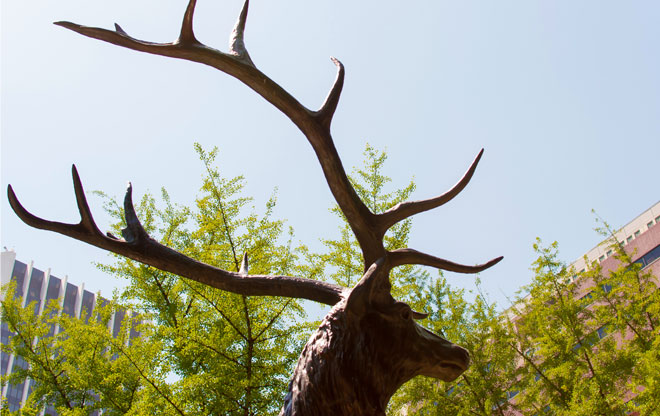
The Three-Thousand Pound Monstrosity
In 1900, former Portland mayor David Thompson donated the fountain to the city that now sits in the middle of Main Street between the squares. The base was designed by local architect H.G. Wright and includes drinking troughs for horses and dogs. Since its installation, many have tried to have the 3,000-pound bronze elk atop the fountain removed. The elk has been called a "traffic obstacle" and "a monstrosity of art" because of its disproportionately large antlers and skinny body.
Image: Robin Wilcox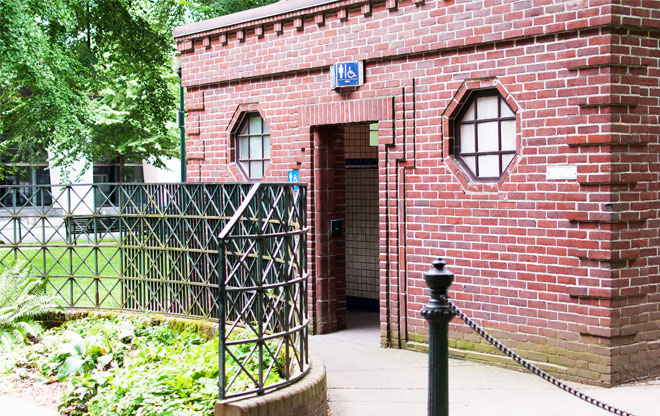
His and Hers: A Restroom Apart
Each square features a public restroom: men's in Lownsdale, and women's in Chapman. The buildings are the only remaining evidence of the historically gender-exclusive public squares. One thing to know before you go: The stalls have no doors.
Image: Robin Wilcox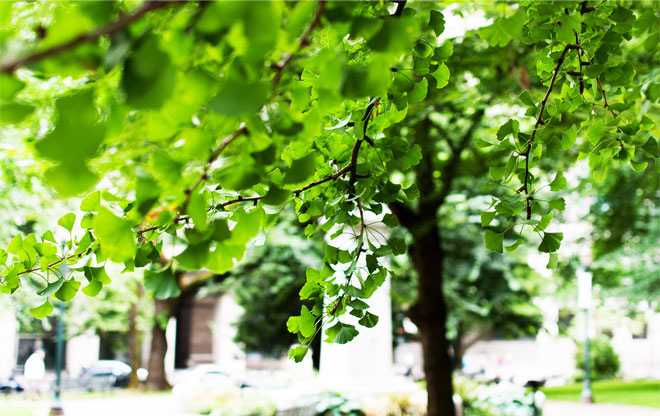
A Tale of Two Groves
Groves of mature elm and gingko trees shade the squares on hot days and screen views of the surrounding buildings. Keen observers will notice that even the gingko trees are divided by gender.
Image: Robin Wilcox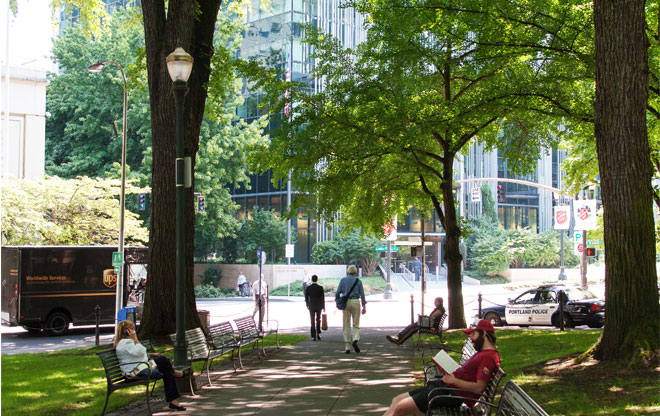
The First City Park
Chapman and Lownsdale squares were the first platted city parks in Portland. Benches line the diagonal pathways and are popular places for taking in the vibrant downtown characters while relaxing in the shade. Old and new are juxtaposed in and around the site. The Edith Green-Wendell Wyatt Federal Building, now one of Portland’s most energy-efficient buildings, rises 18 stories above the southeast corner of Chapman Square. The building underwent a modernization between 2009 and 2013 and is expected to receive LEED Platinum status.
Image: Robin Wilcox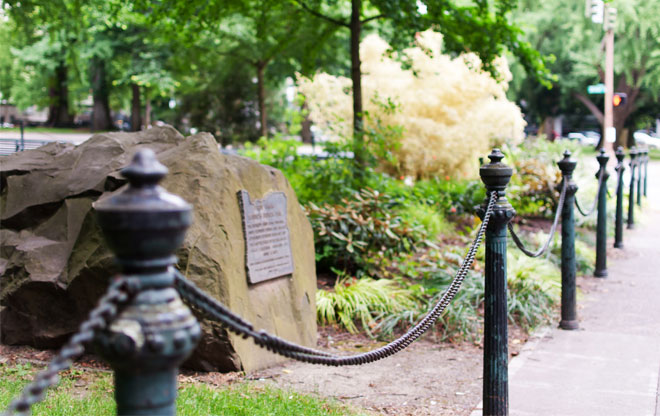
4,000 Volts
At 10:00 p.m. on June 3, 1889, the first electric power transmission line in North America went online and terminated in Chapman Square. A bronze tablet on a basalt block commemorates this fun fact. A line approximately 13 miles long stretched between Chapman Square and the electric generation station at Willamette Falls in Oregon City.
Image: Robin Wilcox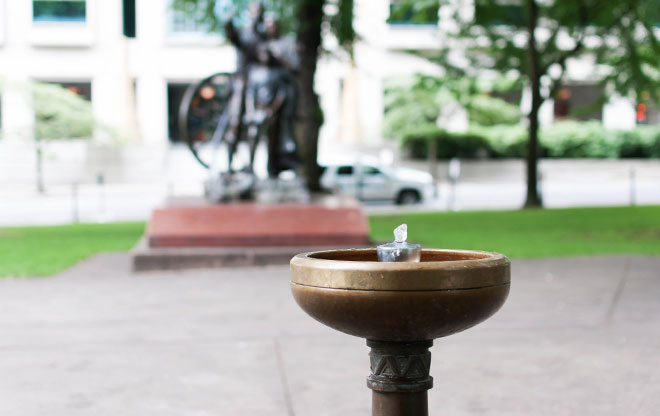
Not a Benson Bubbler
In the center of Chapman Square, a flowing fountain with an iconic bronze basin invites park users to enjoy fresh Bull Run Water. This is not, however, a Benson Bubbler, Portland’s iconic public drinking fountains that sport four drinking bowls. Seventy-four of these single-bowl Benson Bubbler look-a-likes can be found around Portland.
Image: Robin Wilcox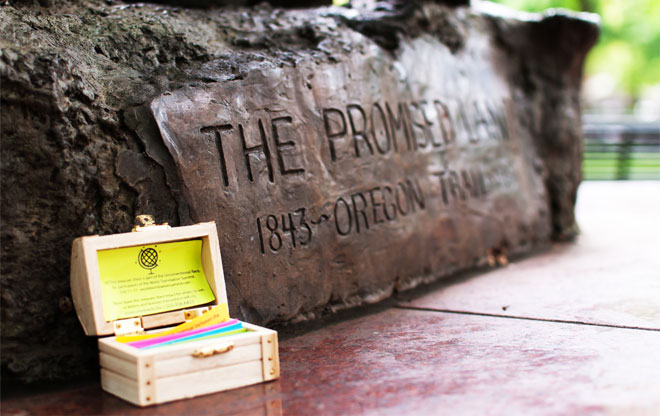
Keep Portland Weird
Bronze statue The Promised Land commemorates the 150th anniversary of the Oregon Trail and was added to Chapman Square's collection of monuments in 1993. Footprints were sandblasted into the concrete in front of the statue. When I visited downtown one Sunday, I found a tiny treasure chest in the arms of a pioneer woman.
Image: Robin Wilcox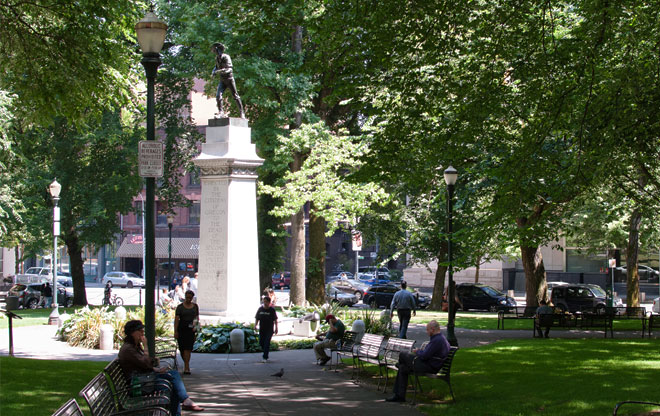
War Monuments
A man’s plaza is apparently more suited to war monuments. Soldiers Monument honors the first troops to enter Guam during the Spanish American War. The obelisk was designed by Douglas Tildan and was dedicated in 1906 to honor the Second Oregon U.S. Volunteer Infantry. The monument's height frequently attracts the attention of tourists walking past the square.
Image: Robin Wilcox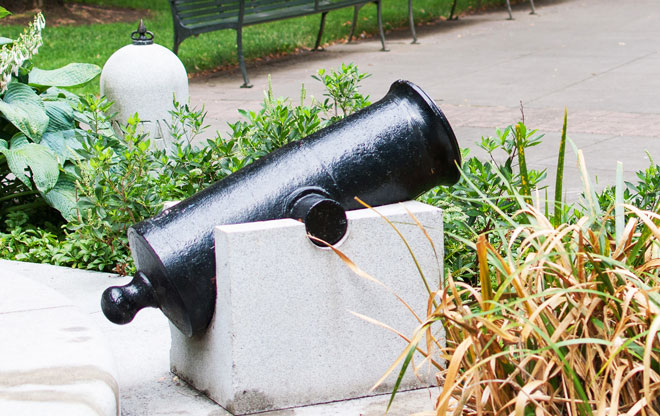
Sumpter?
Two small howitzers formerly housed at Fort Sumter were added to the site by Colonel Henry Dosch, who was also responsible for siting the tiny cannons faced north and south because they were used by both Union and Confederate troops. A plaque in Lownsdale Square misspells Sumter as ‘Sumpter’.
Image: Robin Wilcox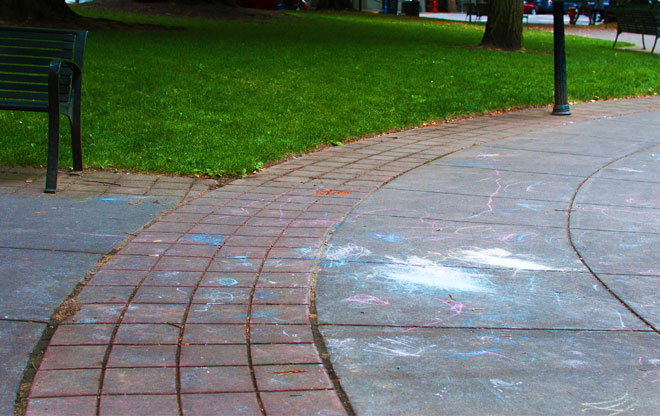
Community Sustainability
The Plaza Blocks tell a story of evolving community sustainability. Originally, Lownsdale was a site for gentlemen to gather and developed a collection of war monuments. Chapman was a place for women and children to seek refuge from men in the heart of downtown and is home to a more homely collection of monuments. Today, the idea of separate plazas sounds absurd. Children regularly play in both plazas. Men can frequently be spotted napping in the lawn of Chapman Square, while women enjoy reading on the benches in Lownsdale Square.
Image: Robin Wilcox